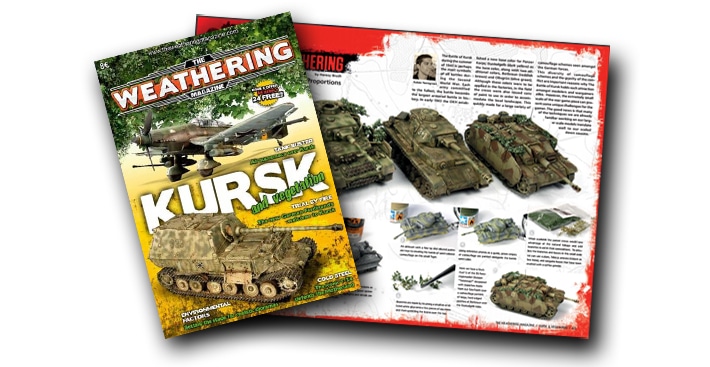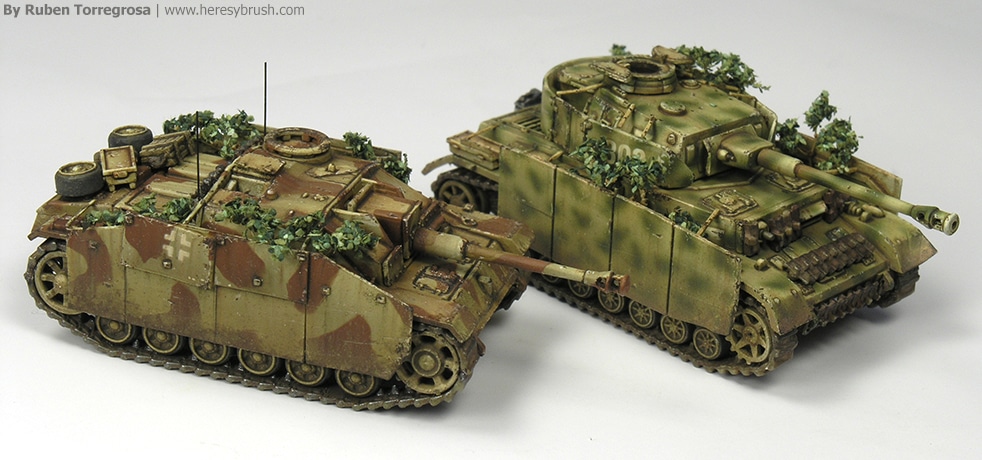
It’s very common to observe impressive streaking effects on vertical surfaces in Flames of War vehicles. However, we can’t apply the same effect on horizontal panels, because the gravity result is different, obviously. Here, I want to explain different ways or tools to work the horizontal panels.
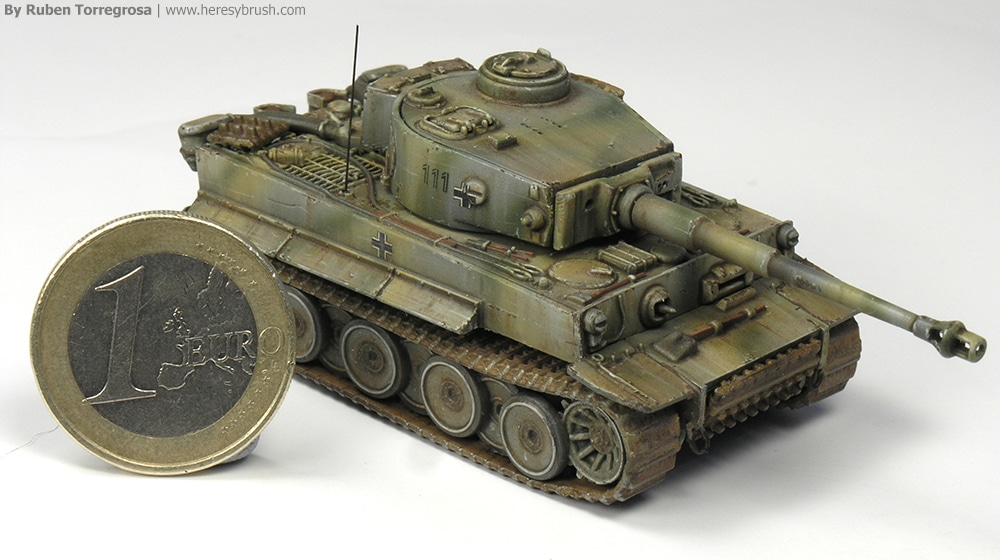
In vertical surfaces enamels and oils are usually used in this way: first we paint dots or vertical stripes with different colors. And then we blend all colors using a brush moistened in white spirit, by applying vertical strokes. The result are interesting vertical streaks. But these are illogical on a horizontal surface!. So, I want to explain briefly three different methods or tools to work horizontal surfaces: enamels, oils and pigments. However, although I’m going to explain them in different paragraphs, they aren’t exclusive. We can use all in our model (note, enamels and oils are too similar!. I use one or other depending of the color I need).
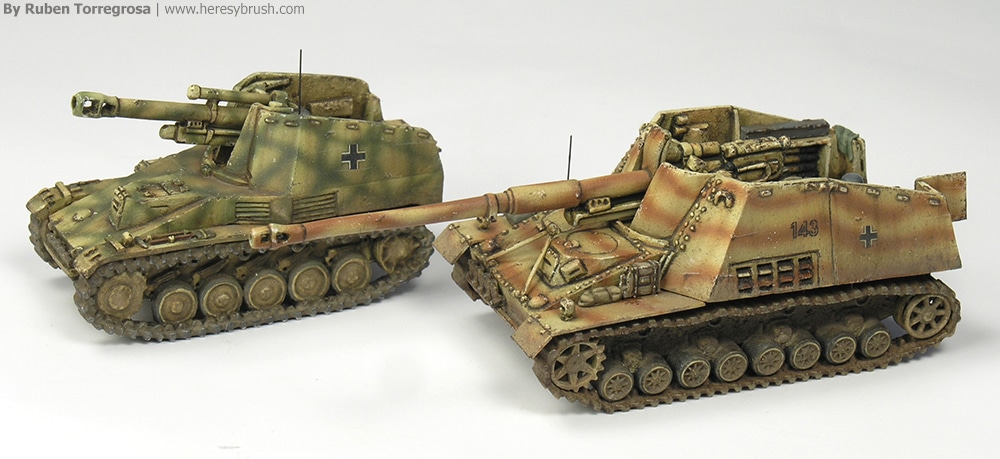
To use enamels we can use ready-to-use products or classical enamels. Anyway, we should use White Spirit or turpentine to dilute the paint, because we only want a subtle effect. In my case, I usually use two colors: brown (earth/dust) and red (oxide). But you can use whichever you want. For instance, if you are painting a German white wash, I wouldn’t use the red one, because the red color on a white surface has a too strong effect!. Therefore, the idea is to apply the diluted enamel around hatches, rivets, etc. Wherever we want. Then, using white spirit or turpentine and a brush, we diffuse the enamel in the extremes of the enamel stain. We only want to stain the region in contact with the detail. We can remove the effect if we are not glad with the result by using a brush moistened with white spirit. And if we wait a while, we can apply a second layer to improve the effect.
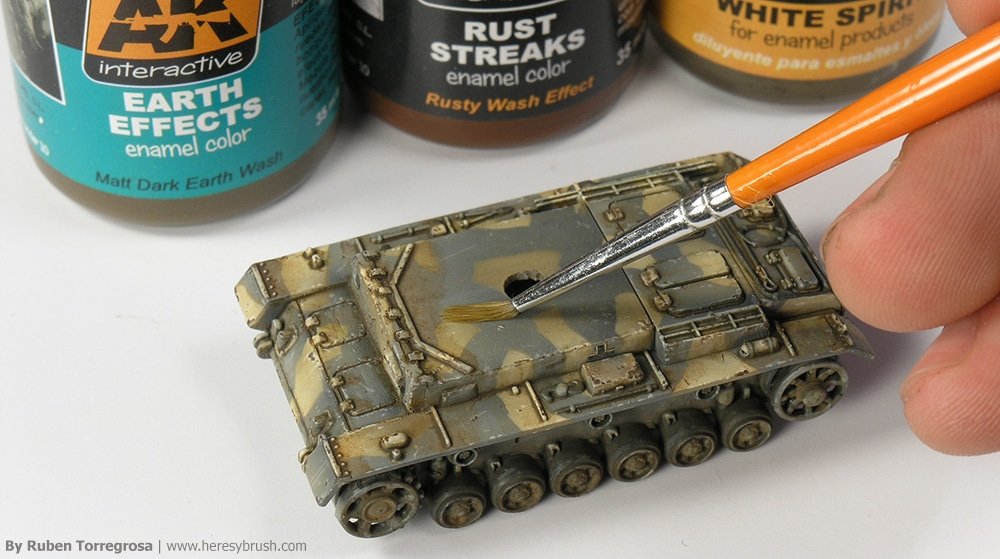
On the other hand, we can use oils instead enamels. The method will be the same, since both paints can be diluted with White Spirit or turpentine. Once more, I use enamels or oils depending of the color I need and the colors I have. But, if we use oils, we should use a bigger amount of white spirit, because the paint is more concentrated than enamels (enamels are liquid, while oils are almost solid!). I don’t apply directly the oil in the model. I prefer to prepare a wash/ink, which I apply on the model.
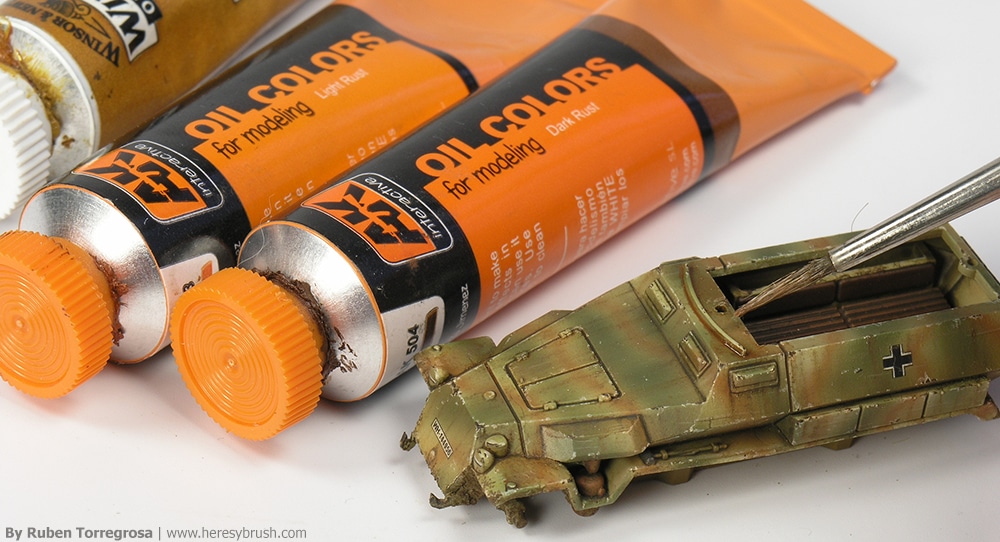
Finally, we can also use pigments or pastels. To use this tool, we have different ways, but I want to explain the method I usually use. First, I prepare a mix of different pigments. For example, if I want a neutral earth tone, I mix three different medium colors (this idea is from Michael Rinaldi books). Then, I apply this mixture on whole surface, but influencing the recesses (where dust and earth could accumulate). We can use an old brush to distribute the mix. After, I apply some drops of White Spirit to fix the pigment. The brush wouldn’t touch the pigment, because you can drag it and create artificial effects (NOTE, this could be interesting in some situations). Once the pigment is dry, we can remove the excess of pigment using another old brush or a makeup brush, with smooth strokes. If we don’t like the result, we can use White Spirit to remove the pigment!. Or we can add more pigment to enhance the effect.
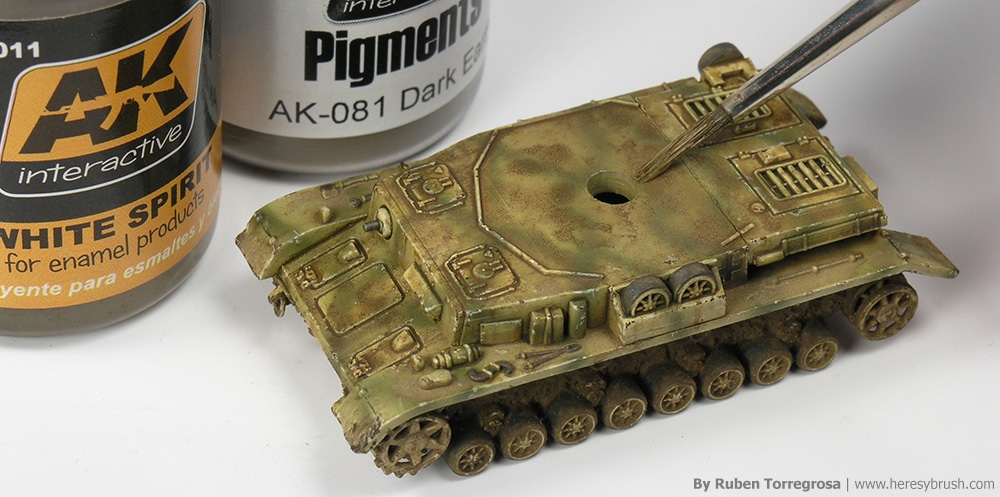
As I said, we can combine the different methods in order to get a bigger visual interest. However, remember the scale (1/100). This means we should ALWAYS apply subtle effects. ALWAYS. We should use enamels/oils and pigments sparingly. If we apply a thick layer of pigment, we can destroy the remaining effects, because we can’t observe them. And this thick layer is not too real!. So, sometimes, less is more.
By the way, if you are interested in these models, you can find a painting guide and tips about 9 FoW tanks in the last issue of The Weathering Magazine, focused in Kursk battle and vegetation. Indeed, I recommend you all numbers of these magazine!. If you know the FAQ book by Mig Jimenez, you can find in this magazines his heritage. Each number is focused in a different topic (dust, mud, chipping, etc), which is explained by different modellers in different ways. So, the information is so interesting!.
